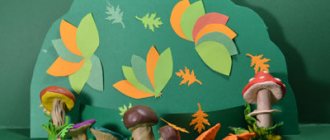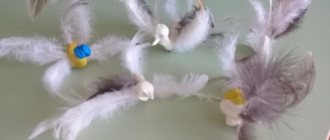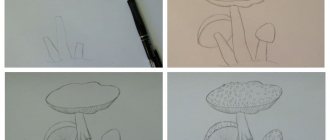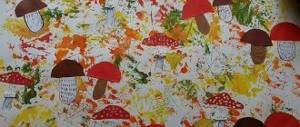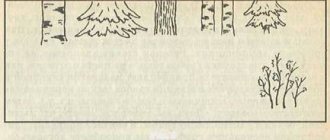3.1 / 5 ( 7 votes)
This incredibly beautiful forest dweller is known to everyone for his red cap with white specks. But do you know everything about this controversial mushroom? Most people avoid this species, trying not to even touch the fruiting body. Some, on the contrary, believe that fly agaric is an excellent remedy for some health problems. How is it really? Find out everything about the benefits and harmful properties of the mushroom, whether you can eat red fly agaric, how to properly prepare medicinal products based on it.
Description, composition, taxonomy and structural features of the fungus
Red fly agaric belongs to the poisonous psychoactive mushrooms of the genus Amanita, Family Agaricaceae, class Agaricomycetes. Latin name: Amanita muscaria. The appearance of the name of the fungus is explained by its insecticidal properties against flies. It may be popularly called “old man”, “toadstool”, etc. The cost of dried mushroom in different countries reaches 150 euros.
hat
The size of this part of the fruiting body can grow between 8–20 cm. At first it has a hemispherical shape, then as the mushroom matures it opens and becomes flat and concave. It has a bright red tint (sometimes dark red). The skin is covered with white wart flakes of white color. There are flakes on the cap - remnants of the cover, which may fall off.
Hymenophore
This is what biologists call the lower part of the cap. The hymenophore is tubular, white in young hymenomycetes, yellowish in old ones.
Pulp on the cut
It is white in color and turns pale orange under the skin. When reacting with air, the shade of the pulp changes. The pulp is characterized by a slightly sweet taste and a subtle odor. The spores are smooth, ellipsoidal in shape, the spore powder is whitish in color.
Leg
This part varies from 5–20 cm in height, diameter – 1–2.5 cm. The shape is cylindrical, the base is thickened, the color is yellowish to white. As the fruiting body matures, the stem becomes hollow. In the upper part you can find a membranous ring with uneven edges and a brown surface.
At the moment, the red fly agaric does not belong to the lists of prohibited or legally controlled entheogenic mushrooms and plants, and is not included in the Red Book. None of the hallucinogenic substances or their analogues contained in it are prosecuted for possession or distribution.
A little history
Scientists consider northeast Asia to be the homeland of the fly agaric (possibly Beringia, a landmass that arose several times on the site of the Bering Sea and connected Eurasia and North America). Date of birth - approximately 20 - 30 million years ago.
Albertus Magnus first mentioned this species in a scientific work in 1256, calling it “fly mushroom”, since the crushed fruiting body was actually used against these insects. The type received its current name Amanita muscaria on January 1, 1821, thanks to the father of mycology, the Swedish naturalist Elias Magnus Fries. In the 20th century, these data were revised, the date was changed to May 1, 1753.
Important! It is believed that flies are repelled by the presence of ibotenic acid and muscimol in fly agaric; they die only from the smell of the mushroom pulp. This is not entirely true! In fact, these insects die after drinking water that accumulates in the mushroom cap (it absorbs alkaloids). Thus, the flies fall asleep under the influence of these substances and simply drown in the water.
Time and habitat
Habitat: coniferous, deciduous, mixed forests of the temperate climate of the Northern Hemisphere, especially common in birch or spruce forests with acidic soil. Forms mycorrhizal symbiosis with almost any tree. Can be found next to redcaps, boletuses, chanterelles and other species.
Grows singly or in groups from June to mid-autumn. In Russia it grows almost everywhere. You don’t have to look for it for a long time; the mushroom can be found in any forest. The species is considered poisonous and is collected only for medicinal purposes.
What causes the red color of the fly agaric?
The bright orange, red color of the cap of this mushroom is explained by the presence of the substance muscaruphine in the fruiting body. It has antitumor and antibiotic properties.
In the red fly agaric it is not persistent, but in the North American Jackson's fly agaric it is so bright and stable that it is used by the aboriginal population to dye fabrics.
What are poisonous red mushrooms called?
Many red mushrooms are completely inedible due to the large amount of toxins they contain.
Important!
They should never be eaten as food, as this can cause severe poisoning.
Russula Kele
The mushroom grows in young conifers and chooses moss as a soil. The cap of the fruit is reddish-purple, the leg is fleshy and massive, also has a purple tint. Despite their danger, the fruits have a pleasant spicy smell.
Red fly agaric
All mushroom pickers know that fly agaric is inedible. It is difficult to confuse it with other mushrooms, since it has a characteristic red cap with white dots. Grows among leaves, mosses and herbs.
The mushroom cap is 7-20 cm in size, has uneven edges and plates in the lower section. The leg is cylindrical, widened at the base. Its height is 6-15 cm, thickness - 1.5-2.5 cm.
This is interesting!
Forest fly agaric is widely used in folk medicine. With its help, tinctures and compresses are prepared for the treatment of arthritis and rheumatism.
Grille red
If you look at the clathrus, you can see that it has a very unusual, specific shape. Belongs to the Veselkov family and is listed in the Red Book of the Russian Federation.
Grows solitarily, prefers rotting wood or soil in deciduous forests. Loves mild and warm climates.
The young fruiting body is white and ovoid in shape, but it can also be spherical. The height is 5-10 cm, width - 5-7 cm. It is completely covered with thin shells.
The trellis has no legs as such. The pulp is spongy and has an unpleasant smell. The mushroom is completely unsuitable for consumption.
Growing at home and in the country
If there are no forests in your region, and fly agarics are needed to create medicines, then theoretically they can be grown. To do this, you need to collect spores in the forest and sow them in prepared soil. Growth will begin in a few years.
A brief process for growing fly agarics looks like this:
- First of all, it is worth considering that special conditions will be needed to grow these mushrooms. The fly agaric forms mycorrhiza with birch, spruce, aspen, oak and other deciduous and coniferous trees. Prepare the soil for sowing or purchase a special substrate.
- Inoculate the spores (mycelium) by moistening the soil with water. The required level of humidity of the mycelium must be constantly maintained for growth to be successful.
- Breeding fly agarics can take several years. Failures are also possible due to extreme temperatures, frosts, overflow or, conversely, the dry season. But this species demonstrates a high degree of adaptability to almost any living conditions.
Places of growth
This mushroom is found in temperate climate zones of the Northern Hemisphere. Red fly agaric is found in deciduous, coniferous and mixed forests, but most often it forms mycosis with birch or spruce. This mushroom prefers soils with high acidity. This variety can grow on neutral soils, but they hardly produce fruit in such conditions. The fly agaric mushroom bears fruit from August to September. To begin the formation of fruits in the mycelium, damp weather and a sharp temperature change are required.
The red fly agaric is found in deciduous, coniferous and mixed forests.
False doubles
The red fly agaric is similar in appearance to its relative, the Caesar mushroom (Amanita caesarea), which is common in Southern Europe. But Caesar has a golden yellow leg and blades. Another relative, the pineal or cone-shaped fly agaric, is listed in the Red Book.
This distinctive feature can be easily identified from individual photos.
Classification, varieties and differences of dangerous doubles of the red fly agaric briefly:
| Name of the part of the mushroom | Amanita muscaria (red fly agaric) | Amanita pantherina (panther fly agaric) | Amanita rubescens (gray-pink fly agaric) |
| hat | Bright red, with characteristic white spots from scales. The edges are often jagged. | Olive-brown or olive, with white spots from large scales, there is a ring and a multi-layered volva on the leg. | Pinkish-brown cap with many gray or pinkish spots from large scales. |
| Hymenophore | The plates are loose, frequent, soft, initially white, later acquiring a yellowish color. Long ones alternate with short ones. | The plates are free, frequent, high. | The plates are loose, frequent, soft, white or cream in color. |
| Leg | At the base it has a significant thickening of up to 3 cm, without a volva, but with scales on the surface. | Gray-yellow, with a powdery coating. The stalk is thinned at the top and tuberous-widened near the base, with a white multilayered volva. There is a ring that disappears over time. | Gray-pink with a ring, with drooping edges and a thickening at the base, surrounded by the remains of a volva. |
| Pulp | White, then pale yellow, soft with an unpleasant odor. | Does not change color, white, watery, almost odorless and sweetish in taste. | White, turns pink or red over time. |
Description of the red fly agaric
It belongs to the class Agaricomycetes. Even young children know the description of the red fly agaric. However, many interesting facts about fly agarics are unknown even to avid mushroom pickers.
The fly agaric Muscari Amanita is most well recognized due to its red cap, the diameter of which ranges from 8 to 20 cm. Depending on the degree of maturity of the mushroom, its shape can range from hemispherical to flat and even concave. There are many white warty flakes on the surface of the cap. They can fall off under any mechanical impact. They often wash off when it rains.
Fly agaric Muscari Amanita.
Ripe fruits have cream or white plates on the caps, the width of which ranges from 0.8 to 1.2 cm. They are located often and hang freely. Red fly agarics have many intermediate plates. What spores look like can only be seen under a microscope. They have an ellipsoidal shape and a smooth surface. Spore powder is white.
The leg has a cylindrical shape. Its diameter can reach 1-2.5 cm. It is hollow inside in mature fruits. The height of the leg is 8-20 cm. The color of the leg can vary from white to beige-yellow. Almost at the cap itself there is a ring-skirt on the stem; its length can reach 2.5 cm. The surface of the ring is lumpy, and its edges are uneven. The color of the skirt can be white or brownish. Like many other poisonous mushrooms, fly agaric mushrooms have a thickening on the stalk near the base, called tuberous by biologists.
The fruits are distinguished by white flesh with a slight mushroom smell. Only under the skin of the cap can it have a yellowish color. The more mature the mushroom, the stronger the smell.
Eating and taste
It is known that the red fly agaric is poisonous, but you should not bypass this mushroom, much less destroy it. The famous Russian mycologist Mikhail Vishnevsky believes that there are 15 ways to eat this fruiting body: from raw to “fly agaric urine”. If you eat red fly agaric raw, nothing bad will happen - it has a sweet, delicate taste. Pickling this non-edible mushroom is not recommended.
Boiling, frying, and other types of heat treatment have a detrimental effect on the toxic substances contained in the mushroom: ibotenic acid and muscimol. By first scraping the skin from the cap and periodically draining the water, these fruiting bodies are completely deprived of their psychotropic properties.
Fly agaric was used by some peoples of Europe and North America as a tonic food with restorative and psychedelic properties. In Japan, boiled and fried Amanita muscaria is also eaten without restrictions.
Interesting fact! The history of mankind does not know any fatal poisonings from fly agaric. It is estimated, for example, that in order to become poisoned, you will need to eat at least 20 large fly agaric mushrooms.
The meaning of red fly agarics for animals
Some species of herbivores and carnivores eat fly agarics. Deer and elk especially love this mushroom. In addition, these fruiting bodies are included in the diet of squirrels and bears. The poisons contained in the fruit are not dangerous to these representatives of the forest fauna. It has not yet been established why animals consume these poisonous mushrooms.
Some researchers believe that ungulates use this mushroom for medicinal purposes.
Digestive upset, expressed by diarrhea, allows deer and elk to remove worms from the body. Perhaps the substances contained in this fruiting body help improve the condition of the digestive organs.
In addition, deer and elk consume these mushrooms to enhance the body's defense mechanisms. Perhaps ungulates and bears are attracted to vitamins and minerals, which are contained in large quantities in the fruiting bodies of this mushroom. When observing animals that ate these poisonous fruits, it was not revealed that the mushrooms had psychotropic effects on ungulates. Even small creatures such as squirrels can eat these fruits without harm.
Medicinal properties and use in folk medicine
The mushroom cap, or more precisely, its upper red film, has the greatest medicinal value. Fly agaric contains strong poisonous alkaloids: muscarine, muscaredine, muscimol, ibotenic acid. Mushrooms contain a lot of fiber, as well as enzymes that promote the breakdown of fats and glycogen.
This type of fruiting bodies is very effective for oncological diseases (cancer, leukemia), radiation ulcers, and dermatitis. In the pharmacological industry and homeopathy, medicines are made from mushroom extracts that help with angina pectoris with stabbing and burning pain in the heart, radiating to the left arm, palpitations, arrhythmia, angioneurosis of the extremities, and hernias.
In folk medicine, fly agaric is used to successfully treat diseases of the spinal cord, tics, chorea, alcoholism, alcoholic delirium, goiter, and depression. The tincture is used for external treatment of rheumatic pain, radiculitis, and gout.
Important information! Any treatment must be prescribed and accompanied by a doctor. Independent preparation and use of preparations based on any mushrooms is fraught with dangerous consequences and can have an extremely negative impact on health!
Taking vodka tincture
Fly agaric tincture is an excellent folk remedy against many ailments. It can treat ulcers, joint pain and even cancer.
How to cook:
- Extract juice from fresh fruiting bodies.
- Strain through several layers of gauze.
- Mix with alcohol or vodka in a 1:1 ratio.
- Pour the product into a dark glass container, close tightly and leave for 10 days.
The product is for external use only. The container should be shaken thoroughly before each use.
For internal use, a product is prepared based on a different recipe:
- Cut fly agaric mushrooms should be kept in the refrigerator for 1–2 days. Then finely chop and place in a glass jar.
- Pour in vodka or alcohol (70%), and the liquid should cover the contents of the jar by 2–4 cm.
- Leave for 2-3 weeks.
The product can be used for rubbing for rheumatism, radiculitis, osteochondrosis, problems with the spine and back. Taken orally in drops: 15-20 drops per dose as a sleeping pill, expectorant for coughs and pneumonia.
You can also make a homeopathic remedy from red fly agaric:
- Squeeze the juice from the mushrooms (2 drops), pour it with vodka (10 ml).
- Close the container with a lid and shake thoroughly.
- Measure out exactly 2 drops from this bottle and place in the same container with 10 ml of vodka. This procedure must be repeated 30 times, that is, dilute the initial dose 1:30.
The product is taken 5 drops per tablespoon of water 2 times a day, washed down with liquid. You should use the alcohol tincture for no longer than 3 weeks, then take a break for a week.
Dried red fly agaric
Drying red fly agaric helps convert toxic ibotenic acid into a less dangerous and psychoactive compound called muscimol. It is best to dry the fruiting bodies in their natural environment, strung on a thread or other convenient device (wire, thin rope).
Drying Features:
- Make sure that you are looking at Amanita Muscaria and not other relatives of this species.
- It is more advisable to dry the caps, since they contain the largest amount of active substances.
- Give preference to small, young specimens, leave old and lethargic ones in the forest.
- Dry until the fruit becomes brittle.
- After drying, the product should be stored in a dark, dry place.
Note! 10 g of properly prepared fly agarics corresponds to 110 g of fresh ones.
The effect of taking dried fly agaric depends on the dose taken and the individual characteristics of the person. The average norm is 15 g or 5 small caps, which are best taken gradually. With a small dose, a person may experience increased energy, euphoria and mental clarity. In moderate cases, visual hallucinations appear, but nevertheless the person can react adequately and answer questions. With a large dose, a person becomes inadequate; vomiting, gastrointestinal upset, diarrhea, and increased secretion of saliva and sweat may occur.
Preparing the decoction
A decoction of fly agaric strengthens the immune system - the active substances of the mushroom force the body to produce antibodies that begin to fight not only mushroom toxins, but also other unwanted elements and parasites. The product helps expel helminths from the intestines and lamblia from the liver, is used for diarrhea, constipation, flatulence, and has a choleretic effect.
A decoction of red fly agaric is prepared as follows:
- Mushroom caps are placed in enamel or ceramic dishes and filled with water.
- You need to cook for about 10-15 minutes on low heat.
- Cool, strain the broth.
- Take 3 times a day after meals, 5-10 drops.
Red fly agaric ointment for radiculitis and arthritis
To prepare this folk remedy, take fresh mushroom caps and grind them with the same amount of sour cream or other fat (you can use badger). The mixture is thoroughly ground and applied to the sore spot at night. In the morning, wash it with warm water. Store the ointment in any container except metal.
Infused fly agaric juice for compresses
To prepare it, take the caps of fresh fruiting bodies and chop them. Fill the jar with this mass, close it, but so that air can enter the container (cover with gauze or make several holes in the nylon lid). In this form, the mushrooms should stand for a month. During this time, the fly agarics will give up their juice, which will remain at the bottom of the jar. It must be drained and used for its intended purpose.
For oncology
Cancer patients who have lost faith in healing often resort to treating the disease using folk remedies. This is extremely dangerous and is not recommended by doctors. However, drugs from fly agaric are taken externally and internally according to a special regimen, considering them a lesser evil compared to chemotherapy. In addition, such folk remedies are considered good for preventing cancer.
The preparation algorithm consists of the following stages:
- Finely chopped caps of 4 mushrooms are placed in a glass container and filled with 150 ml of pure alcohol.
- Leave for 14 days in a dark place.
- After this time, the infusion is filtered.
Treatment is carried out according to the following scheme: start with 1-2 drops per day, increasing daily by 1-2 drops. The total volume is adjusted to 30–40 drops per dose. Such therapy can last a very long time, up to six months. Then the dose is reduced in the opposite direction, take a break and repeat again. When carrying out such treatment, you need to follow a diet: eat fermented milk products, vegetables, fruits, and drink a lot of water.
Red fly agaric tea
This drink has a pronounced hallucinogenic property, people begin to hear voices, see spirits, etc. To make tea, you need to put 1 tsp in a glass of boiling water. mushroom powder and simmer for 15 minutes over medium heat. 3 minutes before the end of cooking, add 1 tea bag. At the end, you need to strain the broth and sweeten it to taste.
Use in cosmetology
The beneficial properties of red fly agaric are successfully used in cosmetology. Products based on this type successfully treat stretch marks, varicose veins, eczema and other problems. For example, anti-wrinkle cream promotes the synthesis of your own collagen. Mushroom oils supply valuable beneficial acids to cells.
Fact! In ancient Egypt, fly agaric ointment was used in cosmetology as a remedy for wrinkles.
Fly agaric extract in combination with citrus oil helps speed up metabolic processes in the deep layers of the skin. Massages with such oils perfectly relax and relieve inflammation in the muscles. Mushrooms also help with skin problems such as cracks and calluses - the cream softens the skin and speeds up healing.
Use for medicinal purposes
The red fly agaric cap has a unique value. These mushrooms also contain a large amount of fiber and enzymes, which allow you to effectively break down fats and glycogen. Red fly agarics are actively used in the treatment of cancer, radiation ulcers and dermatitis. In pharmacology, the active substances of the red fly agaric are used to produce medicines that effectively fight angina pectoris, heart pain, increased heart rate, arrhythmia and hernias.
Traditional medicine actively uses various decoctions of this mushroom to treat diseases in the spinal cord, alcoholism, goiter and depression. To restore joints and treat radiculitis, tinctures of red fly agarics are used.
In homeopathy, red fly agarics received special recognition two centuries ago. The homeopathic medicine Akarikus is based on an extract from the red fly agaric. The drug was used to combat diseases such as parkinsonism, seizures, bladder paralysis and muscle spasms.
Red fly agaric is actively used in cosmetology. Extracts without toxic substances are created from mushrooms. As a result, the extract contains a whole complex of enzymes and active antioxidants. It is used to increase elasticity and firmness, smooth the surface of the skin, and stimulate cell renewal.
To combat insects, special formulations are created using the cap of the red fly agaric. To do this, the cap is cut into small pieces and then filled with water or milk. The resulting mixture is covered with blotting paper. It is important that the paper extends beyond the edges of the plate so that insects can land on it. The resulting product has been used to combat insects since ancient times. However, as it turned out later, flies do not die from eating fly agarics.
It is important to consider that the use of medications and tinctures based on red fly agarics can only be done in consultation with a doctor. Mushroom poisoning can seriously undermine your health. You need to be extremely careful.
Pregnant women and children should not consume fly agarics. Do not use red fly agaric ointment on open wounds. Individual intolerance may also occur from consuming this mushroom, which can have serious consequences.
Symptoms of mushroom poisoning, first and emergency aid
The red fly agaric contains a high content of toxic chemicals, which can cause poisoning:
- ibotenic acid and its derivative muscimol. Able to freely penetrate the blood-brain barrier to brain tissue. Act as psychomimetics (hallucinogens). Ibotenic acid - its crystallization occurs in anhydrous form or in the form of monohydrate; the substance is highly neurotoxic and causes the death of brain neurons.
- muscarine Causes a decrease in cardiac output and dilatation of blood vessels, a drop in blood pressure, nausea, vomiting, increased salivation, and bronchospasm.
- muscimol It is a psychoactive toxin, a mood stimulant, and has a dissociative, sedative-hypnotic effect. The molecular formula of muscimol is C4H6N2O2.
Fly agaric poisoning occurs rarely, but most often it is caused by improper use of products based on it for medicinal purposes. The first signs of intoxication begin to appear within a few hours after eating and carry a certain danger:
- weakness;
- nausea, vomiting;
- dizziness and headache;
- temperature increase;
- visual disturbances;
- bradycardia;
- delusions and hallucinations.
Death occurs extremely rarely, but the victim requires emergency medical care:
- Drink plenty of fluids before the doctors arrive (at least 1 liter).
- Inducing vomiting. The stomach should be lavaged until the vomit becomes clear.
- Taking absorbents: activated carbon, Enterosgel, Smecta, Polysorb. These drugs prevent the intestines from absorbing toxins.
From a toxicological point of view, atropine is an effective antidote for mushroom poisoning. The volume and advisability of taking it are determined only by a doctor. Self-medication for poisoning can be harmful to health.
Contraindications for use
Absolute contraindications for taking any drugs based on red fly agaric include pregnancy and breastfeeding, and others. The consumption of this fruiting body by children is strictly prohibited.
When using products based on red fly agaric, you should take a particularly responsible approach to dosages, observe personal hygiene: wear gloves when working, wash your hands thoroughly with soap and water after touching the preparations. Make sure that toxic agents do not come into contact with mucous membranes, open wounds, or areas with affected skin.
Psychotropic and toxic properties of substances
The use of red fly agarics for food has long been practiced in the culture and life of many peoples. For example, the Chukchi took decoctions and powder of the mushroom as an intoxicating remedy and stored it in large quantities for the winter. After using these drugs, hallucinations arose, attacks of joy and anger alternated, objects split into two, sounds began to be heard, and colored visions appeared. The state is similar to entering a trance; it was often used by shamans during rituals.
The ancient Hindus prepared the so-called sacred drink “soma” from the red fly agaric. In the descriptions we find the following description of the drink: “a child of the earth, red in color, without leaves, flowers or fruits, with a head resembling an eye,” which is quite consistent with the appearance of the fly agaric.
There is information that they could be prepared by the Yakuts, Yukaghirs and Ugrians. Moreover, in Western Siberia they ate fly agarics raw or drank a decoction of dried mushrooms and used them as a psychedelic. But most often they preferred to prepare mushrooms; they were dried, bitten off and washed down with water.
It is believed that during prolonged digestion the toxic properties of fly agaric are lost and it becomes less dangerous. But this opinion has not been scientifically confirmed so far.
Application in medicine
Despite the fact that this mushroom belongs to the fly agaric genus and has a scary, scary, repulsive name, it is still sometimes used for medicinal purposes.
For example, it differs from its fellows in its medicinal properties.
Substances such as betaine, which belongs to amino acids and vitamins, are found in its fruiting body, and this mushroom also has good physiological activity.
Betaine is an excellent substance that has a good effect on metabolism and is a dietary supplement. It is part of many drugs that have a beneficial effect on liver function.
So, betaine is used in a number of drugs that are designed to save people from obesity. However, to date, the 100% effectiveness of pink fly agaric has not been scientifically proven.


